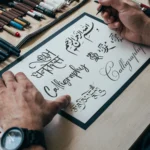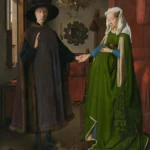
Welcome to the world of “Liberty Leading the People,” a timeless masterpiece by Eugène Delacroix that transcends canvas and paint to embody the fervor of a nation in revolution. Painted in 1830 against the backdrop of the July Revolution in France, this iconic artwork captures the spirit of defiance, unity, and the indomitable pursuit of liberty. Join us on a journey through the historical and artistic tapestry woven by Delacroix’s brushstrokes—a narrative of sacrifice, symbolism, and societal transformation. As we explore 25 historical facts and numerical trivia surrounding this renowned painting, we invite you to unravel the layers of meaning, delve into its cultural impact, and witness the enduring resonance of “Liberty Leading the People” in the realms of art, history, and popular culture.
Date of Creation: Painted in 1830, “Liberty Leading the People” by Eugène Delacroix stands as a visual testament to the fervor of the July Revolution in France. Executed in the aftermath of this historical event, Delacroix’s masterpiece captures the essence of a nation in upheaval and the quest for a new societal order.
Inspiration from Revolution: Rooted in the tumultuous events of the July Revolution, Delacroix’s brushstrokes reflect the intensity and passion that characterized this period. The painter skillfully channels the collective spirit of the people rising against perceived tyranny, creating a timeless portrayal of revolutionary fervor.
Allegorical Representation: “Liberty Leading the People” is more than a historical tableau; it is a profound allegory. Liberty, depicted as a woman, takes a central role, embodying the aspirational ideals of the French Revolution. Her dynamic posture and determined gaze symbolize the guiding force propelling the people towards a new era of freedom.
Liberty’s Symbolism: The tricolor flag held aloft by Liberty in the painting is a powerful symbol. It encapsulates the principles of liberty, equality, and fraternity—the very ideals that fueled the revolutionary fervor in France. Delacroix masterfully weaves this symbolism into the fabric of the artwork, creating a visual anthem for the transformative aspirations of the people.
Contemporary Influences: Delacroix blends classical allegorical elements with contemporary realism, capturing both the timeless yearning for freedom and the specific sociopolitical climate of 19th-century France. The juxtaposition of classical and contemporary elements adds layers of complexity to the painting, making it a nuanced commentary on the intersection of history and artistic expression.
Triangular Composition: Delacroix’s deliberate use of a triangular composition in “Liberty Leading the People” is a stroke of artistic brilliance. The triangle, a symbol of stability and harmony, elevates Liberty to the pinnacle, reinforcing her role as the stabilizing force in the chaotic revolutionary scene. This compositional choice enhances the visual impact of the painting and draws the viewer’s focus to the central figure.
People’s Representations: Within the diverse group of people depicted in the painting, Delacroix captures the collective struggle of various social classes united in their pursuit of liberty. The inclusion of workers, soldiers, and students signifies the universality of the revolutionary spirit, emphasizing the common goal that transcends societal divisions.
Role of Youth: Delacroix accentuates the role of the youth in the revolutionary narrative by featuring a young boy carrying pistols at Liberty’s side. This inclusion symbolizes the passing of the torch to the next generation, underscoring the idea that the fight for freedom is an intergenerational endeavor.
Historical Figures: While “Liberty Leading the People” does not depict specific historical figures, its characters serve as archetypes representing different segments of society. This deliberate ambiguity allows the painting to resonate beyond the specific events of the July Revolution, making it a timeless symbol of the human quest for freedom.
Symbolism of the Barricade: The prominence of the barricade in the foreground is a poignant symbol of resistance. Delacroix uses this element to underscore the people’s defiance against oppressive rule. The inclusion of fallen fighters further emphasizes the cost of this resistance, paying homage to those who made the ultimate sacrifice for the cause of liberty. The barricade becomes a visual anchor, grounding the narrative in the physical and metaphorical battleground of the revolution.
Recognition of Sacrifice: Delacroix pays poignant homage to the sacrifices made during the July Revolution by strategically placing fallen fighters in the foreground of “Liberty Leading the People.” This somber visual element serves as a stark reminder of the human cost of revolution, commemorating those who bravely laid down their lives for the cause of liberty. The inclusion of these fallen figures adds emotional depth to the painting, transforming it into a powerful memorial to the resilience and sacrifice of the revolutionaries.
Exhibition at the Louvre: Following its completion, “Liberty Leading the People” found its place of honor in the Louvre Museum in Paris, one of the world’s most prestigious art institutions. This move elevated Delacroix’s work to the status of a timeless masterpiece, ensuring that it would be seen and admired by countless visitors, scholars, and art enthusiasts for generations to come.
Restoration Work: Over the years, “Liberty Leading the People” has undergone meticulous restoration efforts to preserve its original vibrancy and integrity. Restoration specialists carefully address issues related to aging, fading, and damage, employing advanced techniques to ensure that Delacroix’s masterpiece remains a vivid and evocative representation of its historical and artistic context.
Height of the Painting: “Liberty Leading the People” stands at an imposing height of approximately 260 centimeters (8.5 feet). This substantial size contributes to the painting’s commanding presence, allowing Liberty to dominate the composition and emphasizing the monumental nature of the revolutionary ideals she represents.
Weight of the Painting: While specific information about the weight of “Liberty Leading the People” is not readily available, the substantial size of the canvas and the frame would undoubtedly contribute to a significant overall weight. The physicality of the painting adds to its grandeur and underscores the materiality of Delacroix’s artistic vision.
Artistic Movement: Delacroix’s association with the Romantic movement is evident in “Liberty Leading the People.” The painting embodies the Romantic emphasis on emotion, individualism, and the sublime. Delacroix’s expressive brushstrokes and bold use of color align with the Romantic ideals, contributing to the painting’s emotive and evocative quality.
Public Reception: “Liberty Leading the People” initially received mixed reviews due to its bold and unconventional style. Critics and the public were divided in their reactions, with some praising its innovative approach while others found fault in its departure from traditional artistic norms. However, over time, the painting garnered widespread acclaim for its historical significance and artistic brilliance.
Political Impact: Beyond its artistic merits, “Liberty Leading the People” became a powerful political symbol, resonating not only in France but also internationally. The painting encapsulates the universal struggle for freedom and social justice, making it an enduring emblem for revolutionary movements and a source of inspiration for advocates of liberty worldwide.
Literary References: Victor Hugo, a contemporary of Delacroix, was moved by “Liberty Leading the People” to compose a poem titled “Les Châtiments” (“The Punishments”). This literary response underscores the painting’s ability to transcend the visual realm and inspire other art forms, creating a rich interplay between visual and literary expressions of the revolutionary spirit.
Postage Stamp: In 1983, France paid homage to Eugène Delacroix and “Liberty Leading the People” by featuring the painting on a postage stamp. This recognition further solidifies the painting’s status as a cultural touchstone, celebrating its enduring impact and its role in shaping the artistic and historical narrative of France.
Homage in Popular Culture: “Liberty Leading the People” has left an indelible mark on popular culture, influencing various artistic mediums. Its powerful imagery has been referenced in numerous films, music videos, and advertisements, attesting to the painting’s enduring legacy and its ability to transcend the confines of traditional art spaces. This widespread homage in popular culture reflects the universal resonance of Delacroix’s masterpiece.
Most Expensive Artworks: While “Liberty Leading the People” may not be among the most expensive artworks ever sold, its historical importance and cultural value far surpass mere monetary considerations. The painting’s impact on art history, its role as a symbol of revolution, and its influence on subsequent generations of artists contribute to its immeasurable worth.
Educational Tool: “Liberty Leading the People” serves as a valuable educational tool, offering insights into art history, symbolism, and the socio-political context of the 19th century. Its inclusion in curricula worldwide allows students and art enthusiasts to delve into the complexities of Delacroix’s work, fostering a deeper understanding of the interplay between art and history.
Longevity of Influence: More than 190 years after its creation, “Liberty Leading the People” continues to exert a profound influence on artists, scholars, and cultural enthusiasts. Its timeless themes of liberty, resistance, and unity resonate across generations, ensuring that Delacroix’s vision remains relevant and impactful in contemporary discourses on art and society.
Restoration Challenges: The restoration of “Liberty Leading the People” poses unique challenges due to its age, delicate materials, and the need to balance preservation with public display. Restoration specialists navigate these complexities with meticulous care, ensuring that the painting retains its historical authenticity while being made accessible to audiences in its restored state. The ongoing efforts to preserve and protect “Liberty Leading the People” underscore the commitment to safeguarding cultural treasures for the benefit of present and future generations.








